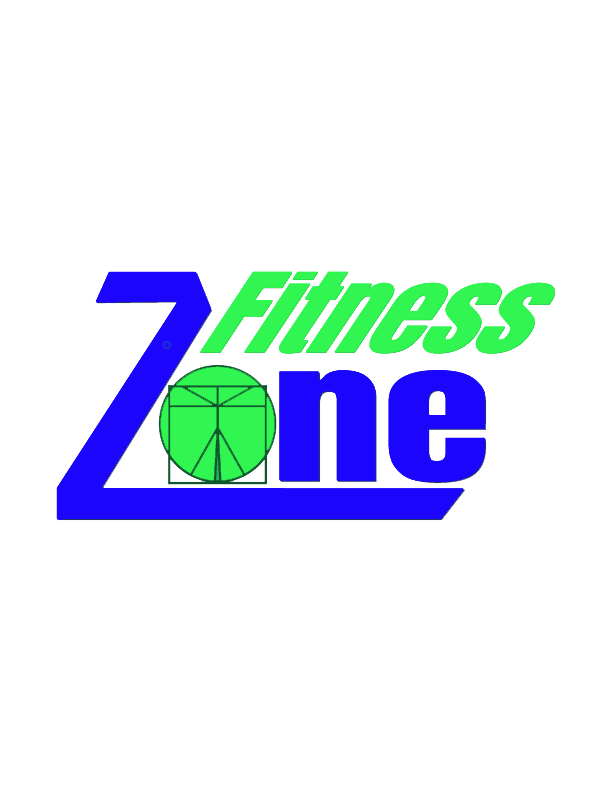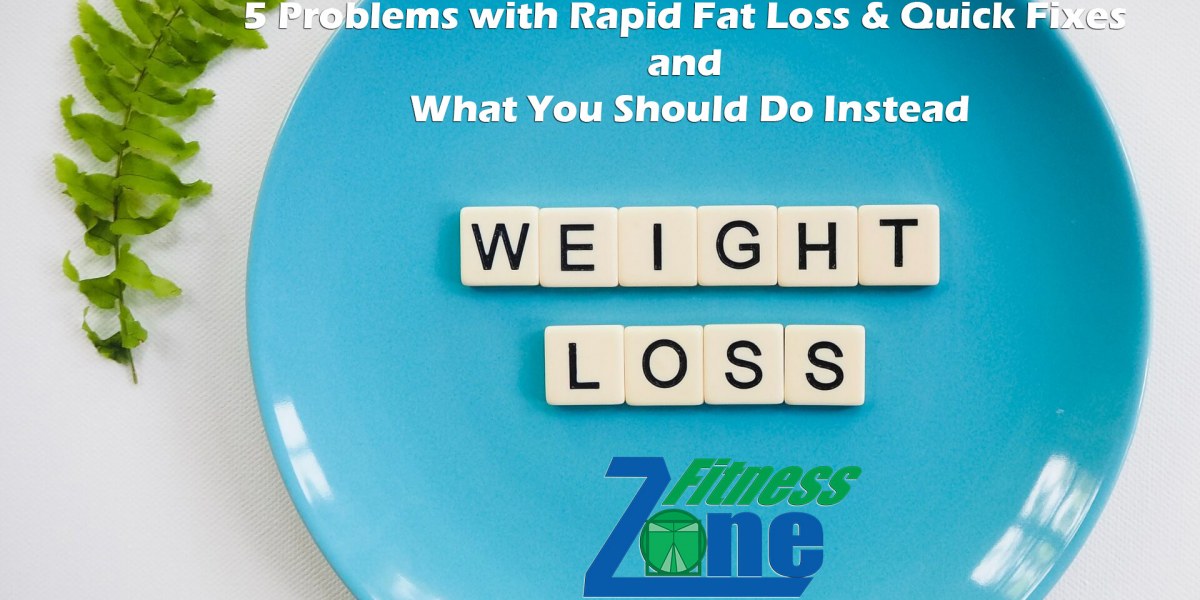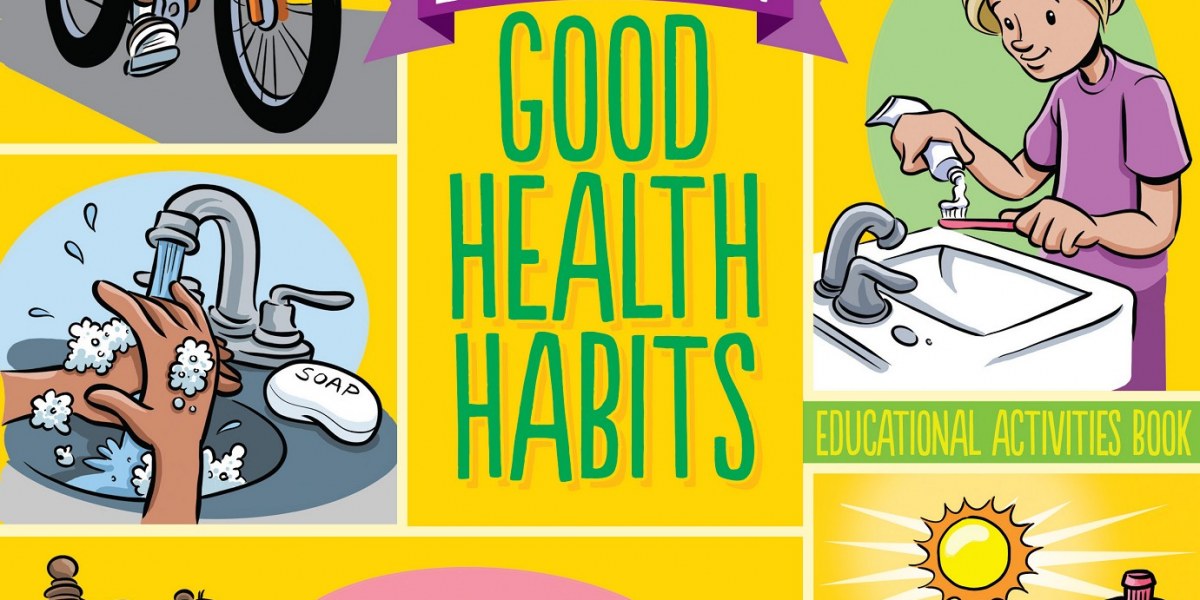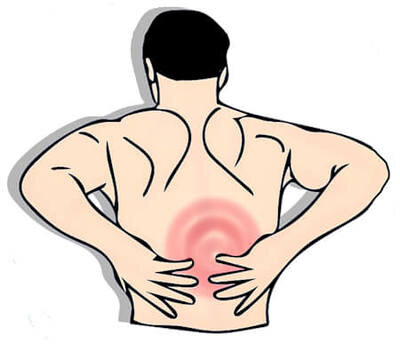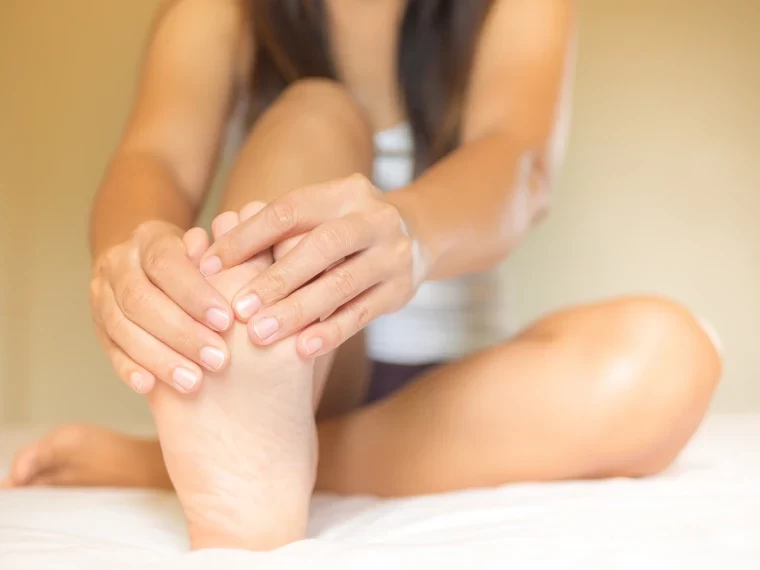Whether you’re a hardcore football fan or simply tune in for the commercials and halftime show, we all know the best part about the Super Bowl is the excuse to whip up some delicious Healthy Super Bowl Snacks. But if you try to be mindful of what you eat, we’ve got a game day PSA for you: With just a few easy tweaks, you can include all of the classics in your starting lineup—including messy wings and creamy dips—without throwing off your goals.
It all starts with a healthy eating strategy, says Leslie Bonci, M.P.H., R.D.N., owner of Active Eating Advice by Leslie and sports dietitian for the Kansas City Chiefs. “Choose foods that take longer to eat, such as dips or something that requires a utensil, like chili. If you can, set up the food in a room away from the TV so you have to get up and move every time you want more,” she says. “You can even try bringing out new dishes each quarter so you’re spreading out your eating instead of gorging all at once.”
Reimagining your menu can be helpful, too. See where you can sneak in extra nutrients, like buying bean-based chips (for filling fiber), mixing veggies into sliders, meatballs, or dips, choosing plant-based bites like cauliflower swapped for wings, or reaching for Greek yogurt instead of sour cream for dips. You can also consider serving individually wrapped packaged items for portion control and good hand hygiene, Bonci adds.
So, eating healthy on Super Bowl Sunday doesn’t have to end in a loss. Get creative and make it a game to find new and nutritious recipes to love. We promise that you won’t regret it and it will make a difference the next day!
Remember that at the Fitness Zone, we believe that Exercise is Medicine!
5 Problems with rapid fat loss & quick Fixes and What You Should Do Instead
THEY ARE EVERYWHERE!!! Fast fat loss and other promises of quick-fixes for building a better body. And it makes total sense.
Check out these two “headlines” Which one is most appealing?
•You can lose 10 pounds of ugly, unwanted body fat in only 7 days!
Or…
•Lose 10 pounds of body fat in 10 weeks and keep it off long-term!
The first headline — lose 10 pounds in only 7 days — tugs at your heart strings and promises an immediate solution.
The second headline — lose 10 pounds in 10 weeks — not as exciting or sexy, right? I mean come on; only lose one lousy pound per week? Pffft. That’s nothing. Why wait 10 weeks when you can follow the first approach and lose it in only 7 days?
The possibility, heck, the GUARANTEE of losing 10 lbs. in a week is WAAAAAY more exciting! We want to see the rewards for our efforts as soon as possible. We have all been programmed to want immediate results.
So, that begs the question – What’s Wrong with Quick-Fixes and Rapid Fat Loss?
So many things, actually.
It is extremely rare that we would ever recommend a quick-fix or rapid fat loss solution.
Here is why:
Problem 1: More often than not, the method required to achieve drastic fat loss & immediate results can’t be sustained long-term. The methods simply are not maintainable for most lifestyles.
What this means is the you probably will achieve results if you follow the plan, but most won’t be able to maintain the training style or results long-term. Stop trying to do it all at once! At some point, even with the best of intentions, you stop the diet/program and then regain the weight back because the training regimen was too impractical.
This applies to many (if not all) diets and “hardcore” fitness programs that promise rapid transformation and require, in some cases, 1-2 hours of gym time per day, most days per week.
Plenty of people have achieved amazing, almost unbelievable, results while following such programs, but once they discontinue it, they find themselves right back where they started…or in worse condition.
And this, folks, is the beginning of a vicious cycle. This is why:
Go on a new diet / exercise plan -> Lose some weight (yay!) -> Realize the diet is too strict or the training plan is too tough -> Give up -> Regain lost fat, and then some -> Experience guilt from “failing” -> Fall further into a funk, eating – whatever, working out – never, because, I mean, what’s the point anyway -> Experience MORE guilt -> Go on a NEW diet/training plan . . . repeat the whole thing over again. And again. And, again…see where I am going with this?!?
If you are tired of this seemingly endless cycle, CONTACT US today! We will help you get results that last!
Problem 2: The plan is too stressful and complicated, so you give up almost immediately.
This leaves the you feeling like a total failure since you couldn’t adhere to the program. While some people can stick to a rigid diet or workout program for a few weeks or even months, some even longer, MOST abandon the routine after only a couple of weeks, if not sooner.
We’re sure you’ve had friends who started a new diet or workout program and quickly gave up, or maybe you’ve experienced this personally. Asking people to do something drastically different than what they’re currently doing is a recipe for disaster. Key word being, “drastically.” Change is good. And some people may need/want a lifestyle overhaul, but it should be done over time, not in a matter of months, or worse yet, weeks.
It’s not practical to ask someone who doesn’t eat very well to follow a rigid eating plan combined with other “rules”, meal combinations, and other guidelines and a new intense, overcomplicated training plan.
It is also not realistic to expect a busy individual to work out every single day of the week, multiple times per day, at a crazy high intensity.
Most people begin these programs/diets with the best of intentions. They’re motivated and determined to finally lose the excess fat they’ve accumulated. They are willing to do WHATEVER it takes…except PUT IN THE TIME necessary to achieve the desired results in a safe, lasting way. Patience and dedication to the process are SO important. And, when their life revolves around a super intense program and the stress becomes too much, they quit.
Now, they (you) are left thinking, “Great, I’ve failed again. I’ll never lose the weight.”
They’re left discouraged, frustrated, and believing that building a better looking and healthier body is way too complicated (but it’s really not) and something they’ll never accomplish.
Problem 3: You always expect rapid fat loss and refuse to settle for anything less than immediate results
Thank you pretty much every online fitness guru and fitness celebrity! If you didn’t read that last sentence with extreme sarcasm, please go back and read it again…I will wait. When scrolling any of the social media platforms, you are no doubt, inundated with promises of rapid weight-loss programs or nutrition plans. You know the ones – “Lose 30 pounds in 30 days!” Or, “Get a 6 pack in just 6 minutes a day!” The list goes on and on, but I think you get the point.
Let’s just assume that any or even ALL of those claims hold up and you are able to see the promised results. What happens next? What happens upon completion of any of those magical programs? Well, most of the time, the participant finds out how difficult, or even impossible, it is to maintain or continue to see such results. Then comes the frustration, anger, and feeling like a failure.
Rapid fat loss programs or quick-fixes get you addicted to very noticeable, drastic results to the point that you expect and accept nothing less.
You end up frustrated and disappointed when you should be celebrating every victory, no matter how seemingly small.
Problem 4: Quick-Fix programs don’t teach you how to achieve and maintain results long-term
This is critical. Because most quick-fix programs are very rigid, this teaches you nothing about building and maintaining lifelong habits. You are simply checking off exercises as you complete them like it is nothing more than a “to-do list.”
My job as a trainer and coach is to help guide my members in developing a lifestyle they can sustain long-term. Our philosophy at 8 ONE 8 is designed to be simple, yet effective, and our training and teaching is designed to energize, inspire, and get LONG TERM, LASTING results at all levels.
Problem 5: Can lead to obsessive compulsive or disordered eating habits
This tends to be the case with rapid fat loss diets and programs. What you will find with these programs is usually a severe caloric deficit, strictly limiting or eliminating certain food groups, and other rigid rules that must be followed.
These strict rules, and especially the elimination of certain foods and food groups, is a recipe for disaster for a lot of people. It is so hard to follow these “diet” plans without wavering, that if you slip (and most will, a time or two) you find it very difficult to get back on track. If you are able to overcome a slip, you may overcompensate and self-impose even more restrictive (dangerous) eating habits to “get back on track.” This is the kind of destructive pattern that can eventually lead to obsessive compulsive or disordered eating habits. We recommend a more well-rounded solution to improving your eating habits.
It’s time to ditch-quick fix diets, break free from binge eating, and be rid of obsessive eating habits for good.
So, what now?
Step One — Ditch the quick-fix mindset
Don’t search for some “holy grail” method or strive to achieve your results overnight.
Yes, drastic, immediate results are possible. But as we have outlined, there are plenty of negatives to a quick-fix approach. My advice: Choose the option that will encourage, and assist you in achieving, sustainable, lasting results.
Step Two — Think both short- and long-term
I’m sure the “think short-term” part is confusing since I just told you to ditch the quick-fix mindset, so allow me to clarify. Think short-term in regards to the process itself. Learn to enjoy the journey.
Don’t become obsessed with your goal (e.g. losing 20 pounds of fat, wearing smaller clothes, etc.) that you forget about today.
Be proud of everything you accomplish. Whether it’s trying a new, delicious food, going to the gym for a great workout, or saying something kind about your body. Celebrate every victory, no matter how small.
Likewise, you need to think long-term. Your journey to build, and maintain, the body you want shouldn’t be about “looking great for swimsuit season” and nothing else. Your goal should be to develop sustainable habits that not only allow you to achieve your goal, but maintain it long-term.
Sustainable, lifelong habits will save you a lot of unnecessary stress and frustration that comes from following quick-fix solutions.
Step Three — Keep it simple
Again, it doesn’t matter what goal you have, you should keep everything simple – not to be confused with “easy.” The process won’t be easy. You will have to push yourself and step outside your comfort zone. However, reaching your health, performance, and physique goals doesn’t need to be complicated.
Focus on the few, important things that will lead you closer to your goals and ignore the minor details. Focus on the tried and true strategies, movements, and principles that have been proven time and again to garner results. Remember the saying, “if it sounds too good to be true, it probably is.”
Make one small, easy change at a time if necessary. Master that change, then make another one.
By keeping things simple you’ll continue to make progress, build momentum, and set yourself up for success.
Step Four — We can’t stress this step enough – Accept that the results may come at a slower than expected rate
If you follow a program or adjust your eating habits in a way that’s simple and sustainable, results will most likely come at a much slower rate than if you were to follow a quick fix, rapid fat loss, program – AND THAT IS OK!!
Slower results, are, after all, RESULTS and should NOT discourage you.
This is why we encourage you to have a short-term mindset and enjoy the journey itself. When you’re enjoying the process instead of going through the motions just to achieve the results, you’ll have fun, discover your true potential, learn a lot, and become the best possible version of yourself.
Remember — the goal is not simply to build the body you want, but rather, build it AND be able to sustain it.
Keep things simple.
Be consistent.
Enjoy the journey.
Become the best possible version of yourself.
The health habits that you maintain can affect your body image, but how you think about your habits is also important. For example, if you go for a run, but you think of it as obligatory or as punishment (for eating? for living?), you’re unlikely to enjoy that run, this not a good health habit .
If you think of running as something you do to help yourself feel good, improve your health and take care of yourself, you might actually enjoy running more and find it easier to sustain this behavior and you have created a good health habit. Further, this mindset will likely support your positive body image as opposed to detracting from it. A patient recently shared that she had changed her mindset about exercise: ‘I decided I just needed to move every day and not worry about how “intense” my workouts are.’ By changing her mindset she created good health habits.
There is a fairly extensive psychological literature on goal setting and achievement that suggests that when we frame goals in terms of things we want to do (called approach goals) versus things we want to avoid (called avoidance goals), it’s typically easier to achieve our goals. A number of explanations have been offered for this, but one is that it can be difficult to avoid certain thoughts or behaviours entirely, making avoidance goals less satisfactory and less easily achieved.
How is this relevant to body image? It’s unlikely that you’ll be able to avoid all the behaviours that contribute to body dissatisfaction. If our goal is to completely avoid foods we deem unhealthy, then we’re likely doomed to fail. But if our goal is to eat foods that are nutritious, such as one or two pieces of fruit per day, we stand a better chance of meeting that goal. When we meet goals that are important to us, we feel a sense of pride that can motivate us to continue on a psychologically and physically healthy path.
The key is to reframe our behaviors in ways that make health habits sustainable. Punishing or shaming ourselves for not doing all the ‘right’ things is rarely an effective approach to good health habits (mental or physical) and can reinforce negative body image. Easing ourselves into healthy habits can be more effective for achieving enduring change. For example, using a gradual approach to become more physically active. Start out exercising two days a week for about 20 minutes per day, and slowly work your way up to 40 minutes about six times per week. Most importantly, don’t worry if one day you run out of time to exercise or just don’t have a good workout. Some days are like that. The important thing is to continue.
Here is a compilation of 20 ways to love your body:
- Think of your body as the vehicle to your dreams. Honor it. Respect it. Fuel it.
- Create a list of all the things your body lets you do. Read it and add to it often.
- Become aware of what your body can do each day. Remember it is the instrument of your life, not just an ornament.
- Create a list of people you admire: people who have contributed to your life, your community, or the world. Consider whether their appearance was important to their success and accomplishments.
- Walk with your head held high, supported by pride and confidence in yourself as a person.
- Don’t let your weight or shape keep you from activities that you enjoy.
- Wear comfortable clothes that you like, that express your personal style, and that feel good to your body.
- Count your blessings, not your blemishes.
- Think about all the things you could accomplish with the time and energy you currently spend worrying about your body and appearance. Try one!
- Be your body’s friend and supporter, not its enemy.
- Consider this: your skin replaces itself once a month, your stomach lining every five days, your liver every six weeks, and your skeleton every three months. Your body is extraordinary—begin to respect and appreciate it.
- Every morning when you wake up, thank your body for resting and rejuvenating itself so you can enjoy the day.
- Every evening when you go to bed you can tell your body how much you appreciate what it has allowed you to do throughout the day.
- Find a method of exercise that you enjoy and do it regularly. Don’t exercise to lose weight or to fight your body. Do it to make your body healthy and strong because it makes you feel good. Exercise for the Three F’s: Fun, Fitness, and Friendship.
- Think back to a time in your life when you felt good about your body. Loving your body means you get to feel like that again, even in this body, at this age.
- Keep a list of 10 positive things about yourself—without mentioning your appearance. Add to it daily!
- Put a sign on each of your mirrors saying, “I’m beautiful inside and out.”
- Search for the beauty in the world and in yourself.
- Consider that, “Life is too short to waste my time hating my body this way.”
- Eat when you are hungry and rest when you are tired. Surround yourself with people that remind you of your inner strength and beauty.
Stay healthy by joining a fitness club and also by establishing good health habits such as eating correctly.
When you Experience a Musculoskeletal Injury, PT is a good choice
In a world where everyone is quick to take a pill or schedule a surgery to mask their symptoms, PT is one of the best methods of injury recovery.
Almost any way you slice it, physical therapy (PT) is an incredibly cost-effective way to recover from a musculoskeletal injury. One study, commissioned by the Alliance for Physical Therapy Quality and Innovation (APTQI), found that patients who utilize physical therapy as their first means of lower back pain recovery saved nearly $1,000 when compared to the group who used injections as their first means of recovery. Those savings jumped to over $12,000 when compared to the average cost of turning to surgery as a first resort.
That’s not just the case for patients with lower back pain. According to another study done by ATI Physical Therapy, My Health First Network, Blue Cross Blue Shield (BCBS), and Greenville Health System (GHS), 70% if patients that opted to use PT as a means for spine, shoulder, and knee pain didn’t need any additional imaging, prescription medication, or visits to their physician. The sooner you start PT , the sooner you recover and the less you spend on health care costs.
While there are still some cases where surgery and prescription medications are necessary for healing musculoskeletal injuries, however, there are times when going to physical therapy first can help you heal faster and save money in the long run. So, if you are dealing with chronic pain and don’t know how to stop it, connect with us today!
This is where the professionals at the Human Performance & Wellness center can make a difference. If you would like to find out more, please call us for an evaluation where we can determine how you can be helped.
The Human Wellness & Performance Center (843) 663-3939

Why Physical Therapy Should Be Your First Treatment for Lower Back Pain
If you, like millions of Americans, suffer from lower back pain, it’s likely your doctor has suggested getting an MRI or CAT scan to get to the root of the problem. But recent studies show that patients who start off with diagnostic treatment instead of heading straight to physical therapy may end up paying a lot more in the long run.
With an estimated 80 percent of workers experiencing lower back pain in their lifetimes, physicians have been searching for treatments that will eliminate back pain for good. But with the widespread opioid epidemic claiming lives across the country and recent data that questions the usefulness of diagnostic imaging, back surgery, and injections, it’s difficult to know where to turn for treatment. But one thing is clear: In most cases, physical therapy should be your first stop for recovery, and it’s usually all you’ll need for lasting relief.
One 2015 study split patients into two groups: those who received an MRI or CAT scan within two weeks of their first visit for lower back pain and a control group that did not. While both groups sought out different treatments after these initial tests, those who received an MRI or CAT scan were far more likely to choose surgery or injections down the road.
These invasive treatments are sometimes necessary, but in most uncomplicated cases of lower back pain, they’re complete overkill. Studies have shown that for most ordinary cases of persistent lower back pain, physical therapy is just as effective as surgery in the long run and less expensive. In the 2015 study mentioned previously, those tested with an MRI early in their treatment went on to spend an average of $4,793 more than those who went straight to physical therapy.
Of course, you should trust your doctors, but it’s clear that many physicians are overprescribing diagnostic imaging, surgery, and injections as they only path to recovery. Before you resort to more drastic measures, give the musculoskeletal experts at The Human Performance & Wellness Center a call at 843-663-3939 and take the first step to eliminating your pain without invasive, expensive treatments!

by Jon Hunt
WORKOUT BECAUSE YOU LOVE YOUR BODY, NOT BECAUSE YOU HATE IT.
“Work out because you love your body, not because you hate it,” is a powerful phrase most have heard/seen, and every person should feel confident in proclaiming. I don’t know who said it first, but it speaks volumes. I’ve witnessed the profound effect it has on clients, women, more specifically than men. Loving your body and choosing to become the best version of yourself instead of constantly finding something to “fix” is empowering, and provides freedom from a more negative self image.
But, and that is a BIG but, (because I like big but’s and I can not lie…also, I like using cliché tag lines from early 90’s hip hop songs and lame jokes!) sometimes, “just love your body” is stupid advice! (*insert disapproving gasp here!) Yep, I said it! Why though? Well, read on ‘cause I’m going to tell you!
Work out because you love your body and not because you hate it is certainly a wonderful goal, however, it’s not just another thing on today’s to-do list that you can check off with ease. As easy as it may be to say, as is the case with most things, it is much harder to DO!
Let me know if I am on the right path with this one – There’s a strong possibility you dislike something about your body – I know what you are thinking, “who is this mind reader?”, right? Is it your stomach, cellulite on your butt, maybe arms that are less “toned” than you would like? Well, I am not surprised, society has conditioned us to view our bodies critically, and ruthlessly, and we’re encouraged to strive toward “better” standards of beauty. — THIS ISNT NECESSARILY A BAD THING…we need to do this, we need to be constructively critical of ourselves from time to time and always aim to be the best versions of ourselves we can be, and we need to strive to constantly grow, we just need to go about it the right way!
So, yes, saying you should work out because you love your body, not because you hate it, makes sense! You should definitely do it. But problems arise when you’re not able to do it right away. Telling someone who has been unhappy with his/her physical appearance for years love their body and stop hating it can cause more harm than good. You may create a “What’s wrong with me?” mindset in that person.
This is when “just love your body” is stupid advice. It’s not always that easy. When someone can’t just love their body, like society tells them they should, they think there’s something wrong with them, and that’s simply not true. This was brought to my attention during a conversation, when the individual I was talking with told me she works out like I should, eats well and has seen some progress, BUT she still doesn’t like her body, and sometimes, she feels like a failure.
We can’t simply tell people “just love your body” and expect them to immediately change. It’s not one of those, “Oh, shit…yeah…why didn’t I think of that?” sudden flips of a switch. It’s no different than telling someone who is drowning in debt to “just stop accruing more debt.” These outcomes don’t happen immediately. Proper steps must be taken.
Loving your body and who you are is a process.
Working out and eating well because you love your body, and not because you hate it, may be more of a process than an immediate solution.
If you don’t like how your body looks and you work out with the specific intent of “fixing your flaws,” you will never be happy! You may fix a “flaw,” but sure enough, as soon as you do, you will find another one…and another…and so on. Instead, try focusing on your performance. What can you do, today, to perform better than yesterday? How can you get to the point that you work out and eat well because you love your body, and you want to discover and be proud of the wonderful things it can do? Specifically, what actions must you take each day?
Stop battling a reflection in the mirror — Instead, battling your training log/training program. Make is less about getting rid of things you don’t like and more about improving your body’s physical abilities and doing your best on any given day. Don’t focus on a dislike for how you look, focus on increasing your strength, stamina, and performance. Focus on how you feel after a great workout or a solid nights sleep. Pay attention to increased energy levels and less fatigue. These are the things that will take it from “just a workout” to a new lifestyle and from working out because “you have to” to working out because you want (get) to. Gradually, over time, you may just find that you start to love my body and appreciate it more than ever before. Make your workouts became solely about being the best version of yourself.
Commit to practicing this powerful principle, and great things will happen.
REMEMBER THOUGH…
Some days are better than others. Loving your body is not an all-or-nothing thing; some days will be better than others. The goal should be to have more good days than bad. When bad days happen, accept them as part of the process and don’t get emotionally invested in them. Know they’re only temporary. Do what you can to make the next day better.
Simplify your health and fitness regimen. Many people who struggle to reach the “I work out because I love my body” state of mind have something in common: the way they eat and work out is too damn complicated. Instead of following proven principles that fit into their life, they attempt (usually, unsuccessfully) to revolve their life around what someone has convinced them is the “best way.” This leads to diet-hopping, starting a program that’s too grueling to sustain, and shame from giving up, yet again, on another program.
It’s nobody’s fault, really, much of the information out there complicates the process and contributes greatly to the overwhelming amount of bull shit in the health and fitness industry.
Get back to the basics. Master proven principles. Do them repeatedly for months and months. THIS IS NOT A QUICK PROCESS! But, you already know that, and now you have some tools to help you stay committed!
If you can apply the “work out because you love your body, not because you hate it” principle today, then do it. But if you’re part of the crowd that finds that easier said than done, that’s fine. Remember this is a process that requires practice, persistence, and ton of patience.
This is your journey toward loving your body, and it may take you longer than others, or you may reach that goal very quickly. It doesn’t matter, so don’t compare your journey to anyone else’s. Take consistent action starting today to make that mantra your reality! You got this!! J
How to stay connected with Your Family in a Busy World
If you feel like you’ve hardly seen your kids since the school year started and you’re not staying connected, you’re not alone. Americans are way too busy – from childhood onward, we’re always running around, packing in as many after school activities, work-related meetings, and social engagements as possible. It’s a problem so pervasive that it has a name: time scarcity.
Families feel time scarcity keenly after school starts in September, when children’s schedules explode with engagements. But all hope for close ties isn’t lost; there are ways to stay connected with your spouse and kids, even in an increasingly busy world. Here are some ideas from counselors, teachers, and psychologists who claim to have mastered the art.
Remember your Rituals
Rituals make up the backbone of individual families and society at large. Most people wouldn’t dream of abandoning their holiday traditions, so why forgo the smaller rituals that bring families together? Whether it’s sitting down to eat dinner together, having a family movie night, or taking a family trip together once a month, make sure these traditions aren’t cancelled. If your family doesn’t have many rituals, a great way to connect is to start some.
Make Every Moment Count
As cliché as it sounds, when you don’t have much time together, it’s crucial to be present for every minute of it. If you have a rare half hour at home with one of your kids, make a point to spend it in the same room and try to start a conversation. If you squeeze in a romantic dinner with your spouse, turn off your phones before the food comes. Listening to each other without distractions will strengthen your relationship.
Hug It Out
Physical contact is vital for closeness. When you get the chance, hug your kids, hold hands with your spouse, and do physical activities as a family, like hiking, biking, or even playing group sports. It’s been scientifically proven that physical closeness leads to emotional closeness, if you’re low on time, take advantage of that shortcut.
Stay Connected by Exercising Together
Remember family health is as important as physical and mental health. Participating in physical activities such as sports, running, biking, hiking, camping and others is a great way to get out of the house and bond over the adventures that these activities may procure. A little healthy competition is also good way to bond
Remember, Exercise is Medicine!
According to the World Health Organization it is estimated that at almost half of the adult population suffers from headaches or pain in the past year. At least 30% of those affected by headaches report having a migraine. Headaches can be debilitating, leading to lost days at work and with family. As people search for answers, they often find themselves in physical therapy. But why?
At The Human Performance & Wellness Center, their highly trained physical therapists are skilled at recognizing when your headache is treatable through exercise and manual therapy. Often, patients think that reaching for the ibuprofen is the only answer; however, tension-type headaches or cervicogenic headaches, characterized by pain that starts at the base of the skull, muscle pain and tightness, can actually be successfully treated with exercise, manual therapy, and activity modification. Our physical therapists will perform a thorough history and evaluate your neck, jaw, and upper back to understand the root cause of your symptoms and plan your treatment.
The WHO has identified several different types of headaches:
- Migraine: moderate to severe headache with nausea, light sensitivity, and pulsating quality.
- Tension-type Headaches: pressure or tightness, band around the head, originating from the neck.
- Cluster Headaches: brief but severe headache, usually around one eye, with tearing and redness of the eye.
- Medication Overuse Headache: caused by overuse of medication to treat headache; oppressive, persistent, and worst on waking.
When can a physical therapist help me with headaches or pain?
- You are experiencing headaches with increased muscle tension or stiff neck
- You have noticed that your headaches change when you move your neck
- You notice yourself rubbing your temples or massaging your neck to relieve your headache
- You have increased tension or pain in your jaw, or you notice that you are clenching your teeth
- You notice your headaches more at the end of the day, after you have been sitting in front of a desk or computer
If your headache tends to creep up your neck throughout the day at work and come with jaw tightness, increased neck stiffness and pain, and tension throughout your shoulders, or you have noticed that your headaches are stress-related, physical therapy can help. Through manual therapy techniques such as mobilization, manipulation, and massage, your therapist will decrease pain and improve mobility. Your therapist will prescribe simple exercises to help you take control of your headache symptoms, and help you modify your workstation or aggravating activities to reduce the frequency and intensity of your headaches.
If you are having any symptoms noted above, or you have been diagnosed with “tension-type” or “cervicogenic” headache and you are a member of the The Fitness Zone we recommend that you visit The Human Performance and Wellness Center right next door and schedule a consultation, we are here to help you.
What’s at the core?
If you’re not on close terms with your psoas, it’s time to get familiar. This muscle pronounced “so-as” is a key player in your core and comprises the group of muscles called hip flexors. As the only muscle group that connects your spine to your legs, the psoas has a big effect on mobility and posture as well as affect back or knee pain
Psoas imbalances can contribute to back and hip pain because the muscles in these areas get overused to compensate. Imbalances are usually caused by short and tight or weak and overstretched psoas muscles. Activities that compress your hips, such as sitting, excessive running or walking, and excessive sit ups, can shorten your psoas and even lead to weakness. If your psoas muscles are short and tight, you may benefit from stretching and lengthening exercises. If the muscles are weak and overstretched, they may require strengthening movements. Here are a few ways to begin addressing imbalances that affect back or knee pain.
Try the constructive rest position
This neutral position can help release tension in your psoas. Lay on your back with your knees bent and heels on the floor and set your feet hip-width apart at a comfortable distance from your buttocks. Don’t force your back to the floor, but simply rest your hands on your belly and let gravity do the work. Try this rest position for 10 minutes a day.
Support your seat
Sitting for long periods of time can compress and shorten the psoas. To decrease this effect, take regular breaks to get up and move around, and practice good posture. If you’re going on a road trip, consider sitting with a rolled-up towel under your sitting bones, which can release pressure on the psoas.
Get a massage
Here’s permission to treat yourself. Because of where the psoas is located, it can be difficult to stimulate, and a certified massage therapist will know how to access it. Regular massages can help with circulation and may improve function.
Consult a physical therapist
If you’re experiencing pain in the lower back, hips, or knees, imbalanced psoas may be to blame. Our physical therapists at The Human Performance and Wellness Center can recommend appropriate stretching or strengthening exercises depending on what’s right for your body.
Regular Exercise
As always getting a regular workout and staying active will always help with your mobility. Our Hybrid Fitness Center will offer you the ability to be a gym member in a place where you have access to Physical Therapists.
Call us to find out more about how you can become a member of our fitness family.
A treatable foot condition that affects millions
Plantar Fasciitis is among the most common causes of foot pain, with approximately 2 million cases per year in America, according to Orthoinfo. The Plantar Fascia is the strong band of tissue that forms a connection between your toes and heel bone. When it becomes strained or damaged, it can become irritated and inflamed, resulting in severe heel pain when standing or walking.
Typically, those afflicted with plantar fasciitis experience sharp, stabbing pain in the heel, especially after taking their first steps in the morning. As the patient continues to move around throughout the day, the pain may subside, only to return after a long period of standing or sitting.
There are several potential causes of plantar fasciitis, including feet rolling inward while walking, high arches, flat feet, overuse through running, obesity, poor shoes, and tight calves or Achilles tendons.
Luckily, the condition is usually treatable, and theta are many remedies for discomfort. Consistently performing toe and calf stretches should help but be careful not to overstretch and make the problem worse. Rest, ice, and anti-inflammatory medicines like ibuprofen will also go a long way, but they are unlikely to eliminate the problem.
Your best bet for escaping plantar fasciitis is through a comprehensive physical therapy program. During treatment, therapists will provide a battery of non-weight-bearing stretches that specifically target the plantar fascia, working on the related areas of the body as needed. Often, patients will begin to see results within a few therapy sessions.
Don’t let plantar fasciitis keep you off your feet. Neglect can lead to a chain reaction of further issues, not to mention a consistent increase in pain. Let us work with you to fix the problem at its source.
The Fitness Zone is not only a place to work out, it is your place for health and wellness. If you feel physical discomfort, ask to speak with one of the Physical Therapists at the Human Performance and Wellness Center and schedule an appointment.
Remember, Exercise is Medicine!
